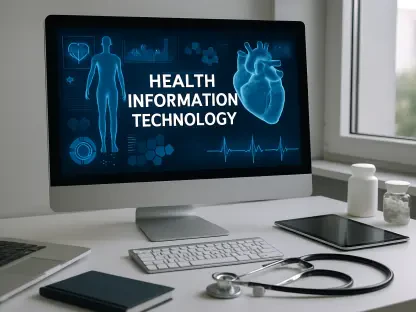When Windows 11 was unveiled in 2021, it came with stringent hardware compatibility requirements, notably the necessity for a Trusted Platform Module (TPM) 2.0 and relatively recent CPUs. This excluded a significant portion of existing hardware from being able to upgrade. Although Microsoft later added compatibility for specific models like the Surface Studio 2’s Intel Core i7-7820HQ, the initial exclusion left a bad taste among potential users. As time has passed, the hardware replacement cycle has mitigated this barrier to some extent, as it is now increasingly difficult to purchase a new PC that is incompatible with Windows 11. However, this barrier’s dissipation has not translated into widespread adoption of Windows 11.
Hardware Compatibility Challenges
The initial hardware requirements for Windows 11 were a significant hurdle for many users. The need for TPM 2.0 and newer CPUs meant that a large number of existing PCs were not eligible for the upgrade. This exclusion was a major deterrent for users who were otherwise interested in the new operating system. Even though Microsoft later expanded compatibility to include certain models, the damage was already done. Many users felt alienated and frustrated by the stringent requirements.
As the hardware replacement cycle progressed, the availability of Windows 11-compatible PCs increased. It became harder to find new PCs that couldn’t run Windows 11, effectively reducing the hardware barrier. Despite this, the adoption rate for Windows 11 remained sluggish. The initial negative perception and the lack of a compelling reason to upgrade continued to hinder its acceptance. For many users, the memory of being left out due to stringent requirements initially introduced a sense of skepticism that still lingers.
Market Share Dynamics
Windows 10 continues to dominate the market share despite the diminishing hardware hurdles for Windows 11. This enduring popularity of Windows 10 can largely be attributed to a lack of compelling reasons for users to upgrade. Many features promoted as new in Windows 11 are already available in Windows 10, albeit not always turned on by default. For instance, BitLocker, which is enabled by default in Windows 11’s Home edition starting from version 24##, is also available in Windows 10.
The critical differentiator for moving to Windows 11 is the necessity of keeping security patches and updates current rather than any groundbreaking new capability. Users and enterprises alike find little incentive to transition to Windows 11 when Windows 10 continues to meet their needs effectively. The absence of standout features in Windows 11 that would justify the upgrade is a significant factor in its slow adoption. The reluctance stems from a “why fix something that isn’t broken” mentality that prevails among both individual users and larger organizations.
Enterprise Hesitation
For enterprises, the case for upgrading to Windows 11 is even murkier. Many enterprise environments can effectively secure Windows 10, and any upgrade to Windows 11 could potentially introduce a host of new issues. User interface changes in Windows 11, such as the inability to reposition the taskbar, have caused frustration among users. Additionally, other problems like Wi-Fi connectivity issues have further complicated the upgrade process.
Some administrators have reverted back to Windows 10 after encountering numerous issues with Windows 11. The potential disruption and cost associated with upgrading to Windows 11 are significant considerations for enterprises. Without a clear and compelling benefit, many organizations are opting to stick with Windows 10, which they can secure and manage effectively. The decision to upgrade involves evaluating risks, potential downtime, and the training needed to adapt to a new interface—all factors that many businesses have deemed not worth the hassle at this point.
End-of-Support Deadline
Despite Microsoft’s intention to phase out support for most versions of Windows 10 by October 14, 2025, the transition to Windows 11 has not been the tidal wave the company and its hardware partners might have hoped for. The reluctance to upgrade is partly due to the absence of a standout feature in Windows 11 that would justify the transition. The impending end of support for Windows 10 is a significant incentive, but it alone may not be enough to drive a substantial migration.
Many organizations will weigh the cost and potential disruption against the benefits of upgrading to Windows 11. The end-of-support deadline is a critical factor, but without compelling new features, it may not be sufficient to drive widespread adoption. Users and enterprises are likely to consider other options, including extended support for Windows 10 or alternative operating systems. In sum, end-of-support deadlines might create urgency, but they must be supported by tangible, user-centered improvements to prompt action.
AI PCs and Future Prospects
Another significant theme is the shift in focus toward AI PCs as a potential driver for future hardware sales. With Windows 11 not delivering the expected boost in hardware growth, manufacturers and Microsoft have turned their attention to AI-enhanced PCs. However, similar to the Windows 11 upgrade dilemma, there is no killer application or clear benefit compelling users to embrace these AI PCs.
The high cost of AI PCs remains a deterrent for many users and enterprises. Potential improvements to functions like Windows Search are not enough to justify the investment in AI-enhanced hardware. The lack of a clear, compelling advantage means that AI PCs face similar adoption challenges to Windows 11. Users and enterprises are cautious about investing in new technology without a clear and significant benefit. Since AI is still in a phase where its contributions don’t universally translate into productivity or cost savings, the allure of AI-enhanced PCs remains minimal.
Historical Context and User Sentiment
When Microsoft unveiled Windows 11 in 2021, many users were frustrated by its stringent hardware requirements. The new OS demanded a Trusted Platform Module (TPM) 2.0 and relatively recent CPUs, excluding a large number of existing machines from being able to upgrade. Although Microsoft later granted compatibility exceptions for specific models, like the Intel Core i7-7820HQ in the Surface Studio 2, the initial exclusion disappointed many users who felt left out. Over time, as hardware has naturally been replaced or upgraded, this barrier has lessened to some degree. It’s now rare to find a new PC that can’t run Windows 11. However, this reduction in compatibility issues hasn’t led to widespread adoption of Windows 11. Despite the initial hurdles being somewhat alleviated, many users remain hesitant to make the switch, sticking with their existing versions of Windows or exploring alternatives. The initial user frustration and the continued reluctance to upgrade have ultimately impacted Windows 11’s overall uptake.









